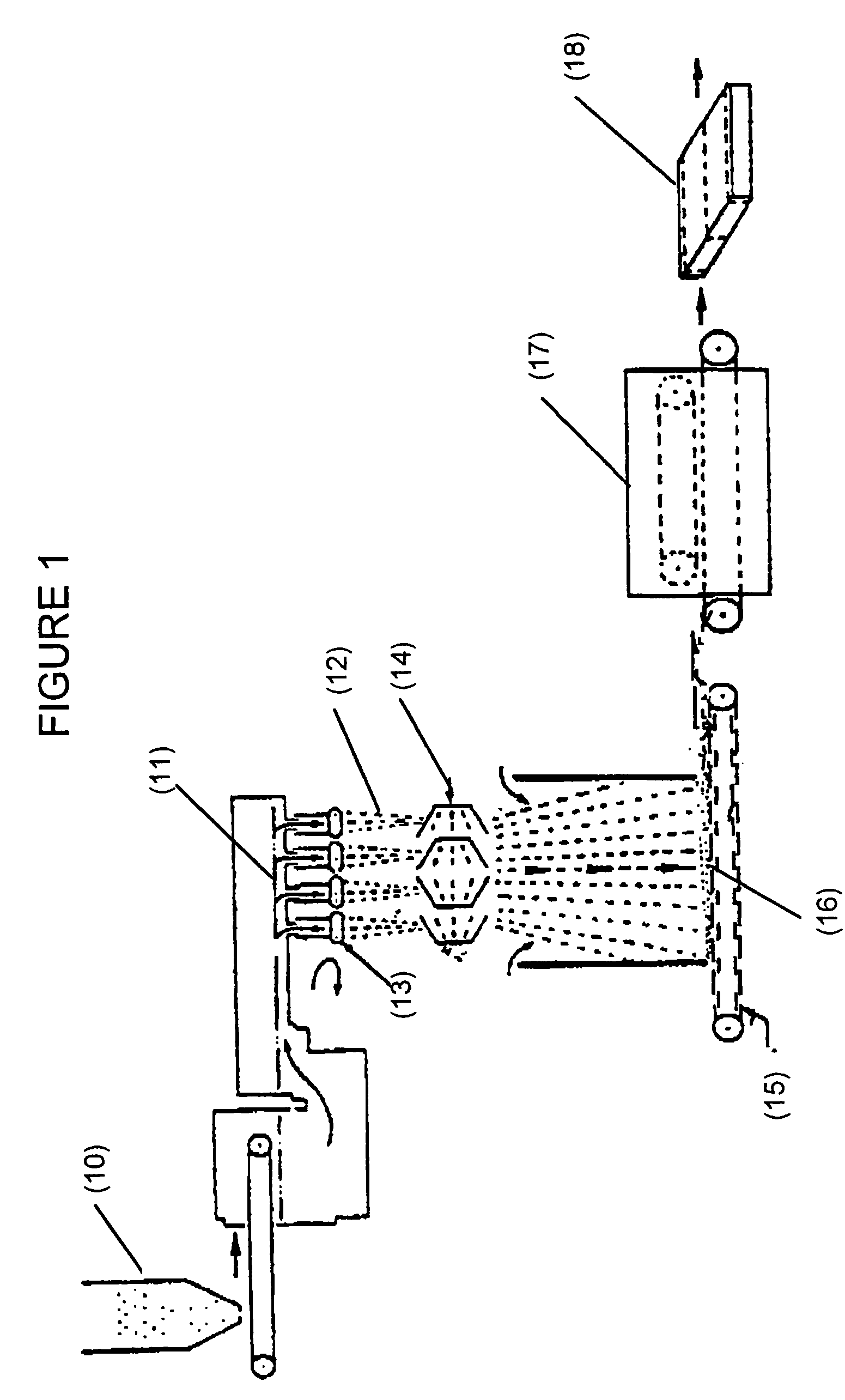Formaldehyde free binder
- Summary
- Abstract
- Description
- Claims
- Application Information
AI Technical Summary
Problems solved by technology
Method used
Image
Examples
example 1
[0077]To a pressure reactor (Parr) was added 1059 g of water, 223 g of SMA-2000 (Sartomer) (Styrene:MA mole ratio of approximately 2:1), 100 g of 40% by weight aqueous solution of diethanolamine (DEA), 68.5 g of a 28% by weight aqueous solution and 60 g of additional water. The reactor was then sealed and heated to about 105° C. where the internal pressure rose to about 10 psig. The content of the reactor was held at this condition under constant stirring until all of the SMA had dissolved and the solution reached a constant solid content (approximately 16%). The final pH of the aqueous solution was 9.5. The IR spectrum of the product showed the presence of both amide and carboxylate functionalities. The product was cured at 210° C. for 10 minutes. The IR spectrum of the cured product (210° C. for 10 minutes) showed the presence of amide, imide and ester functionalities.
example 2
[0078]To a standard resin kettle was added 200 g of SMA-1000 (Sartomer) (Styrene:MA mole ratio of 1:1), 62 g of DEA, and 786 g of water. The mixture was heated to about 98° C. for about 4-6 hours at which point all of the SMA had dissolved and the solution became clear. The sample, exhibiting a pH of about 4.3 to 4.5, then was split into two parts. The pH of each of the separate samples was then adjusted with aqueous ammonia (28% by weight) to pH 5.5 and 7.8 respectively. Both of these pH-adjusted samples showed excellent cure characteristics when heated in an aluminum pan at 210° C. for 15 minutes. The IR spectra of the resin solutions before curing showed the presence of a large concentration of carboxylate functionality, and only a trace amount of ester functionality. This IR spectrum indicates that the reaction of SMA with DEA under aqueous conditions is primarily a hydrolysis reaction where the anhydride is opened up by the DEA (acting as a base) and no significant esterificati...
example 3
[0079]To a standard resin kettle was added 458 g of SMA-1000 (Sartomer) (Styrene:MA mole ratio of 1:1), water 1400 g and DEA 142 g. The mixture was processed in the same manner as in Example 2. The pH of the resin was adjusted, from an initial pH of about 4.4, to between 5.5-6.0 by the addition of 40 g of 28% by weight aqueous ammonia. The solids content of the aqueous resin solution was about 29.4% by weight. One small portion of the resin solution was adjusted to pH 8.0 by adding more aqueous ammonia. An IR spectrum of the solutions at these two pHs showed the presence of large amount of carboxylate moiety and only a trace amount of ester functionality in both of the samples. Both of these samples cured to an insoluble thermoset when heated for 10 minutes to a temperature of 210° C.
PUM
| Property | Measurement | Unit |
|---|---|---|
| Temperature | aaaaa | aaaaa |
| Temperature | aaaaa | aaaaa |
| Temperature | aaaaa | aaaaa |
Abstract
Description
Claims
Application Information
 Login to View More
Login to View More - R&D
- Intellectual Property
- Life Sciences
- Materials
- Tech Scout
- Unparalleled Data Quality
- Higher Quality Content
- 60% Fewer Hallucinations
Browse by: Latest US Patents, China's latest patents, Technical Efficacy Thesaurus, Application Domain, Technology Topic, Popular Technical Reports.
© 2025 PatSnap. All rights reserved.Legal|Privacy policy|Modern Slavery Act Transparency Statement|Sitemap|About US| Contact US: help@patsnap.com

